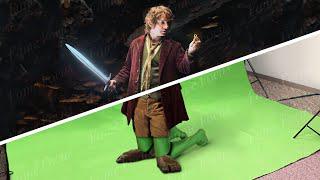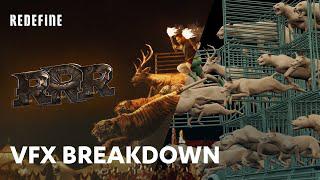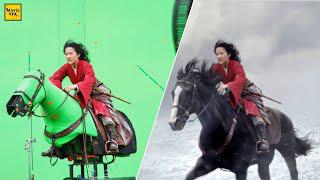Surprising Techniques Used On the Set of Aquaman - VFX Breakdown
Description
If you're planning on doing a big-budget superhero movie and setting it underwater, you'd better get on the phone to just about every VFX house in the world! So that is what they did! ILM, Method Studios, Scanline, Rodeo, MPC, Luma picture, DNEG, Weta Digital, and Digital Domain all came together to create over 3000 VFX shots of which 2300, ended up in the final cut.
Like the music in this video?
Atlantis
The biggest environment they created was the city of Atlantis, VFX artists created over 200 different types of buildings, including the Iconic jellyfish buildings.
Districts were made covering almost 600 square miles and containing over 7000 buildings.
Over 150,000 ships, built from designs from the art department and modified to work in 3D, were used to fill the traffic lanes into Atlantis.
Sea creatures, such as dolphins and whales, and marine vegetation, and coral were added to help anchor this fantasy world to reality. With such a big city full of colorful lights, organic materials, and translucent materials, the biggest challenge, was to render it all.
Trench Creatures
The trench creatures required multiple levels of simulations.
The first step was to create a full-body muscle simulation, where the artists could adjust the stretching and bulging of the muscles whilst still remaining fully dynamic.
The second was simulating the fat and tissue. next was a skin simulation and lastly, they simulated the fins and spines.
Due to a large number of secondary Trench creatures, they had to optimize their workflow so that Creature FX artists could simulate any number of creatures at the same time. However, Hero Trench had full skin and muscle simulations, customized for each shot.
As with most complicated shots, rendering is always a worry. The average shot during the "trench attack" had up to 60 high-resolution creatures, all with muscle and fin simulations, in addition to thousands of creatures in the water and a huge ocean simulation, where even the impacts of raindrops were 3D. The team was conscious of this potential rendering problem from the start and so kept efficiency in mind when building their assets.
The Creature FX team created very fast and stable simulation setups for the muscles and fins.
The Flowline team also optimized simulation times and data usage for water simulations, and the Lighting team brought it all together using Scanline's custom procedural render pipeline ensuring fast rendering and the minimal possible memory consumption.
Underwater?
Due to the large portion of the movie that was set underwater, it was obvious that the film was to be shot "Dry for wet". The VFX teams spent a lot of time creating 'the look' that the director was searching for. The director wanted Color contrast and clarity in the water but with strong light and shadow so the VFX teams developed tools to do accurate color attenuation and light diffusion including a control curve to control how fast the attenuation built up.
They also added moving vegetation, flowing caustics, strong light rays, bloom on light sources, bubbles, and particulate passes to sell the underwater feel.
CG Hair
Perhaps one of the biggest and hardest parts of all, was the hair.
The director wanted long beautiful flowing locks that referenced the comic books.
The VFX teams gathered together hours of video on how hairs clump together, separate, and flow behind a swimmer as they move forward. they used this reference material to help develop their "Haircraft" tools to handle the problems with long hair underwater.
One of the biggest problems is that hair systems are built on interpolating hairs between guides. however, underwater guides can go anywhere, this led to parallel interpolated hair just sticking out. to solve this they had to simulate more guides to ensure they had the edge breakup and the complexity they needed.
The hair didn't just have to move realistically, it had to look great too, it couldn't fall in front of the actor's face or get in his eyes as real hair would, it had to be styled.
To achieve this, they built up a library of pre-sim hairstyles for the start of the shot and then used a robust set of sculpting tools to adjust the hair post-sim.
The odd thing they found was that the shots with a lot of action were easy to do than those just standing still.
Please give us a like if you enjoyed this video, don't forget the links to the music in this video are in the video description and be sure to let us know, in the comments, which movie VFX you'd like to see behind next!










